
C64 PSU for the Kradex Z66 case
The Kradex Z66 case is a pretty unexpensive plastic case for a PSU. I think, some of the C64 PSUs on ebay are packaged in the Z66.
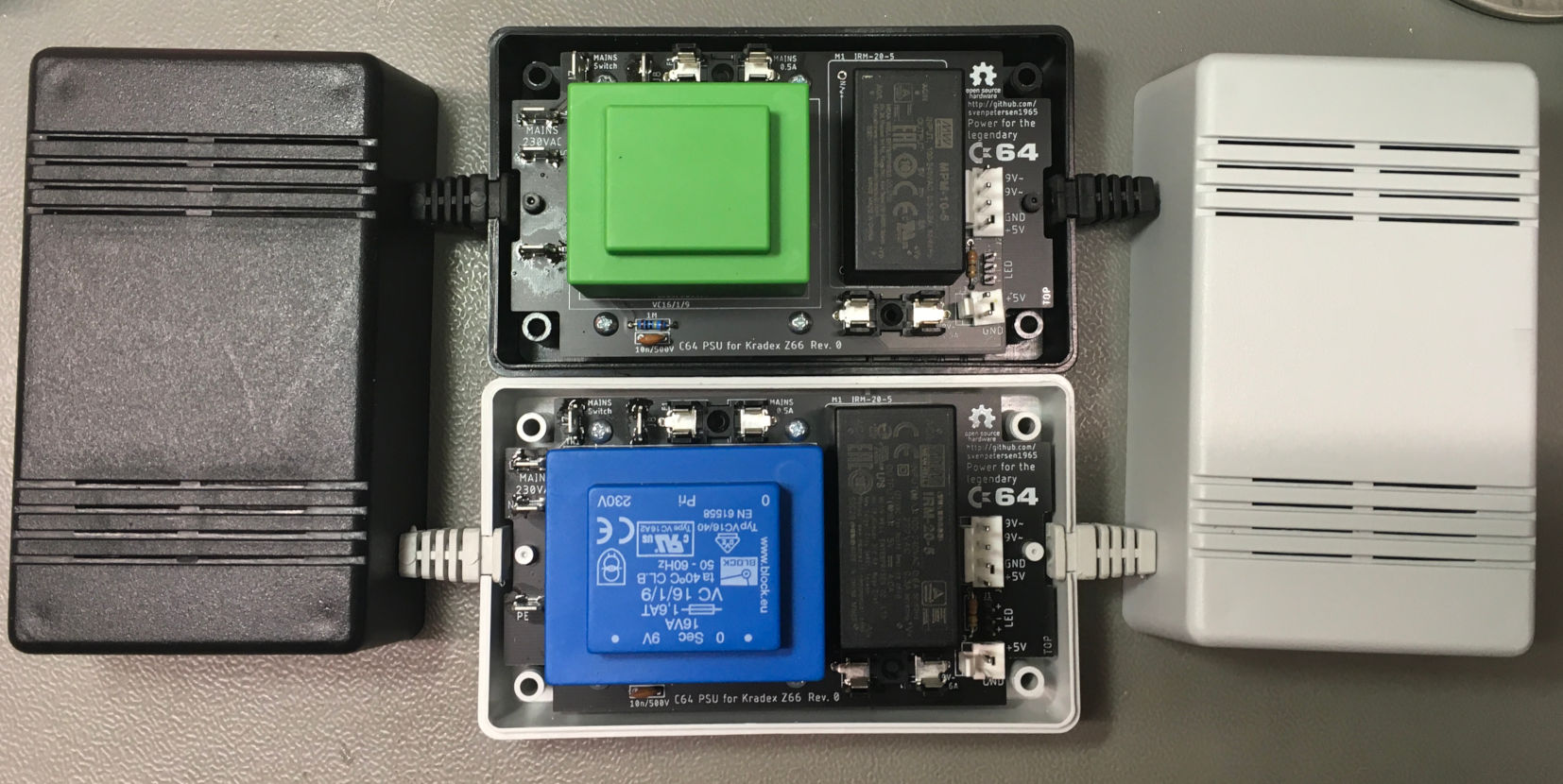
Two variants of the PSU in the Z66 case (Rev. 0)
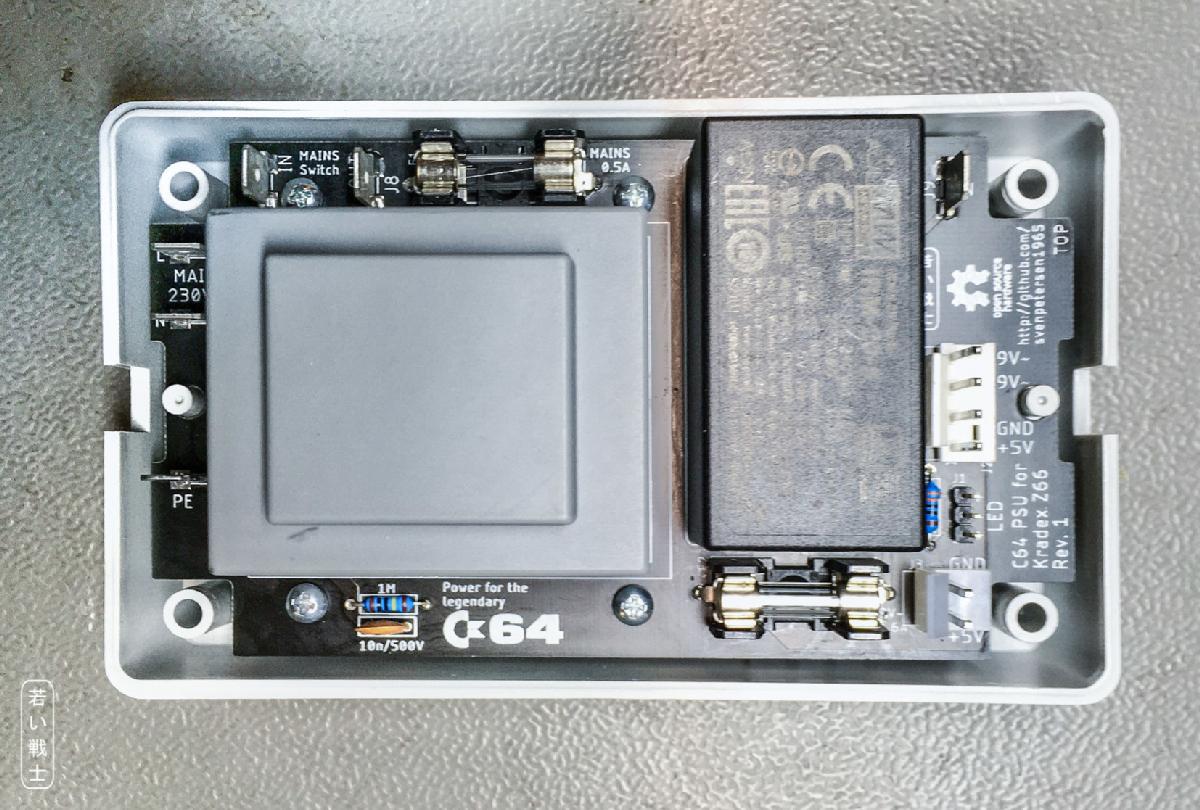
Rev. 1 in case
The PSU can be assembled with different options.
● Transformer TR1: Block VC16/1/9 for 1.8A@9VAC (166VA)
● or Transformer TR2: Breve Tufvassons TEZ10/D230/9V for 1.1A@9VAC (10VA)
● AC/DC converter M1: Mean Well IRM-20-5 for 4A@5VDC
● AC/DC converter 21: Mean Well MPM-10-5 for 2A@5VDC
● Transformer TR1: Block VC16/1/9 for 1.8A@9VAC (166VA)
● or Transformer TR2: Breve Tufvassons TEZ10/D230/9V for 1.1A@9VAC (10VA)
● AC/DC converter M1: Mean Well IRM-20-5 for 4A@5VDC
● AC/DC converter 21: Mean Well MPM-10-5 for 2A@5VDC
I would recommend to use TEZ10/D230/9V and IRM-20-5. The transformer should not be rated much higher than 1A, because a higher rated transformer will have less voltage drop at the C64 load. This higher voltage is not required and which will only heat up the linear regulators. This is usually not a problem, but there are 5 Pin C64 (ASSY 326298) that do not have a heat sink on the 5V linear regulater. This regulator might get slightly too hot. which results in a bad image quality.
The 4A@5VDC are suitable to power a C64 and a Pi1541 at the same time. For this purpose, there are an additional 5V Connector on the PCB.
The 4A@5VDC are suitable to power a C64 and a Pi1541 at the same time. For this purpose, there are an additional 5V Connector on the PCB.
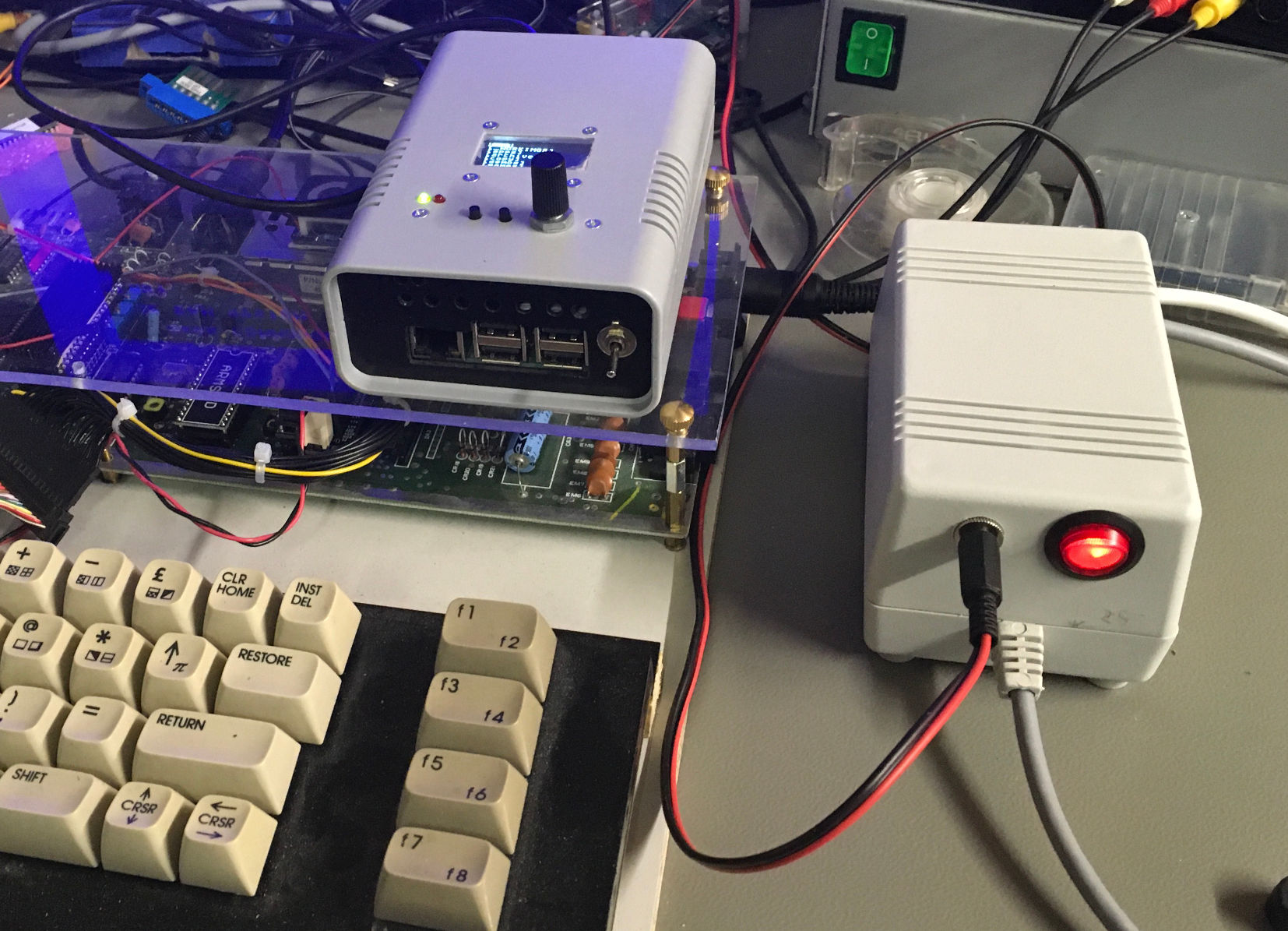
The PSU powering a C64 and a Pi1541 (which is pretty power hungry and a bit picky with PSUs)
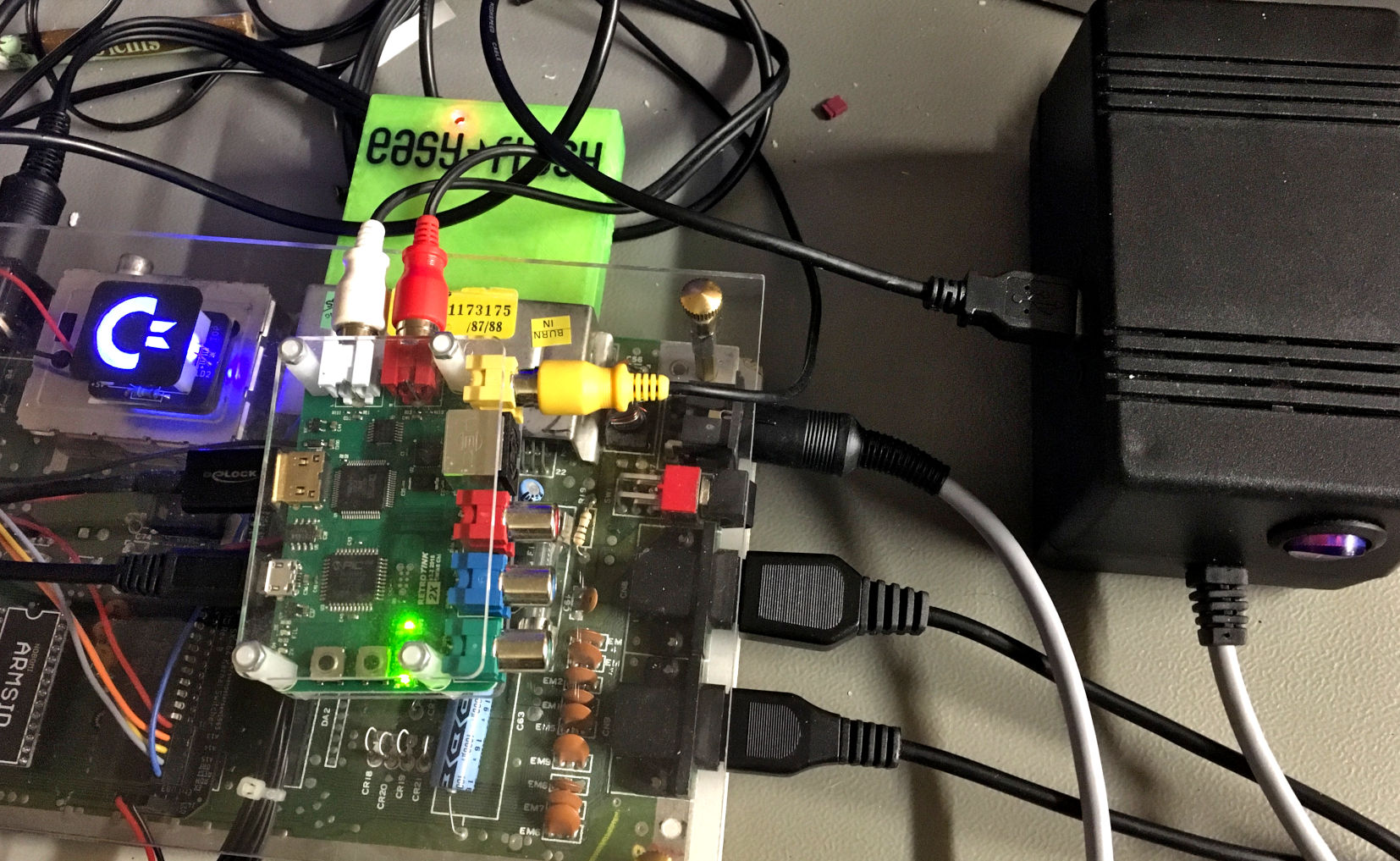
The PSU powering a C64 and a retroTINK (HDMI converter) with the MPM-10-5 (2A) AC/DC
This project is not yet released on Github. It is undergoing a revision. Rev. 1 provides an additional fastOn connector providing neutral (N) for an illuminated mains switch.
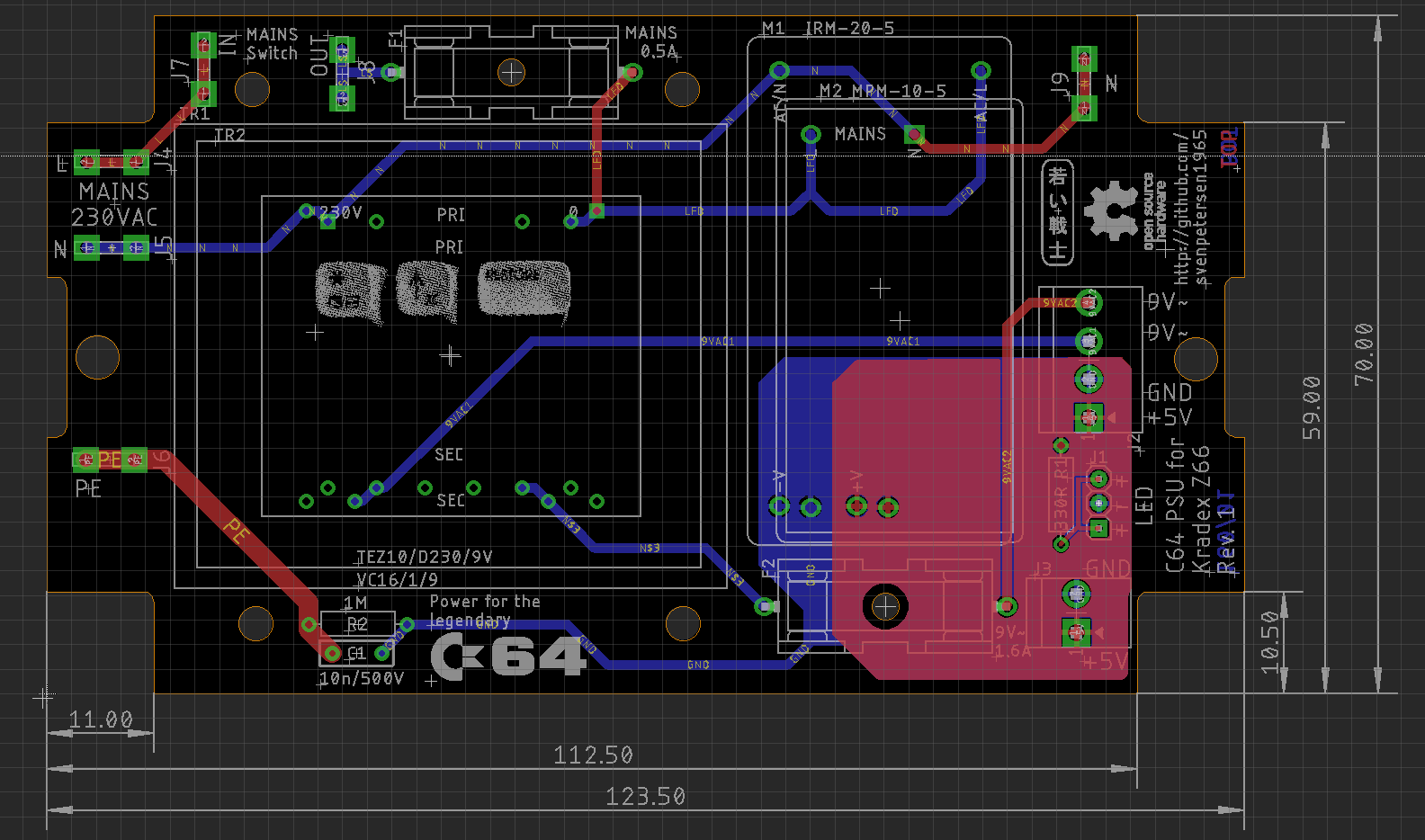
Board layout of Rev. 1
Like in my other PSUs, there is a 1MOhm||10nF RC combination between PE and GND (secondary ground) which is well worth its money. It ties both potentials together, which will prevent the "cheap power supply flickering" that might be introduces by a power supply for another component in the setup, like the mobile phone charger, that can be used for the retroTINK.
The two possible AC/DC modules are of a different quality:
1. The 10W (2A) Mean Well MPM-10-5 is a high quality medical safte approved module with less ripple (100mV p-p) and a higher price.
2. The 20W (4A) Mean Well IRM-20-5 is a standard quality module with twice the ripple (200mV p-p) but slightly cheaper.
The 4A IRM-20-5 module is capable of driving a Raspberry Pi 3B based Pi1541.
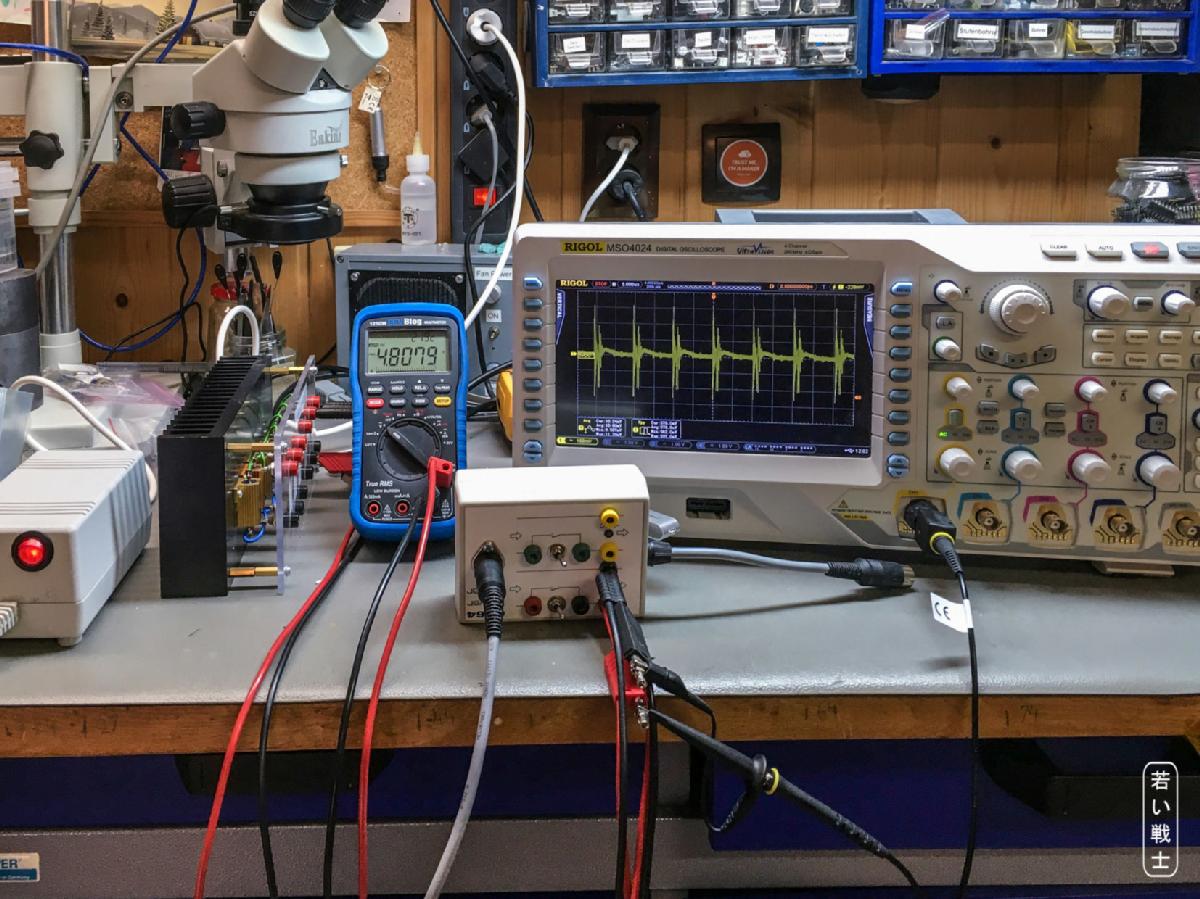
Setup for measuring the ripple
The setup is by far not perfect for an accurate measurement of the ripple voltage. The resulting value will not be close to the rated ripple in the data sheets, but it will show the difference between the two modules. The ripple was measured with a 4.7Ohm/10W resistor to exclude influences of the electzronic load,, that was used for other tests.
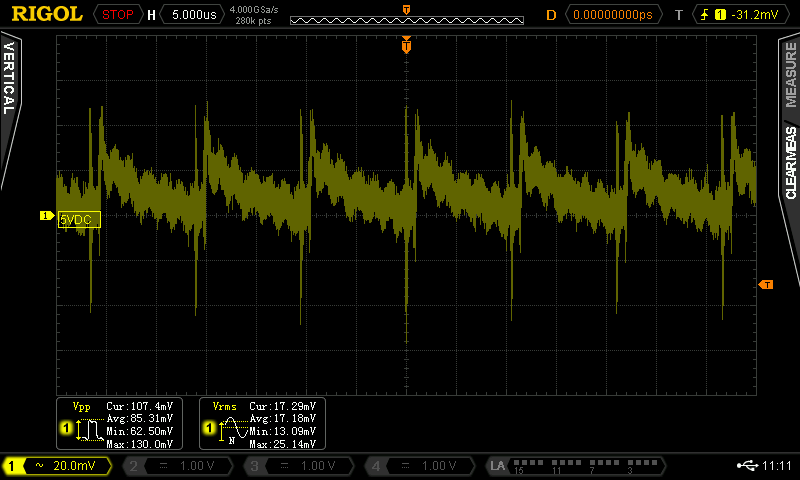
Ripple of the MPM-10-5: 85mV p-p ansd 17mVRMS
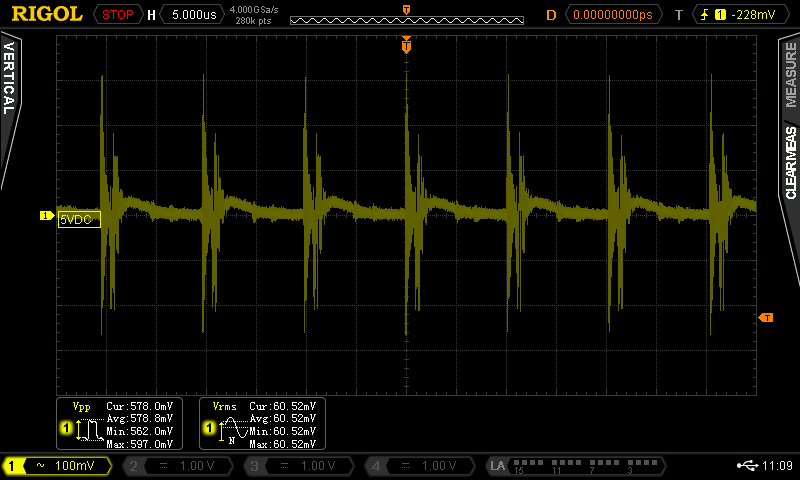
Ripple of the IRM-20-5: 579mV p-p and 61mVRMS>
This ripple is not a problem for the C64, since it is of low energy, the +5VDC are filtered insice the C64 and there are plenty buffer capacitors. A 11 hours test with the IRM-20-5 variant did not show any problems.
Testing the transformers showed, that the 10VA type is the recommended cjhoice and the 16VA type is not.
1. The 16VA Block VC16/1/9 is getting warmer that the rating in its data sheet.
2. The output voltage at about a nominal C64 load is higher than the 10VA output. The regulators get warmer. In a 5 pin C64, which does not have a heat sink for the 7805, this is getting too warm and the C64 crashes/has a disturbed video.
The ambient temperature inside the case with the 16VA type (44.9°C) is actually lower than with the 10VA type (48.6°C), but the 16VA type is rated for 40°C and the 10VA type is rated for 60°C. Thus, the VC16/1/9 is not recommended.
Fine the complete documentation (test documentation included) in the github repository: https://github.com/svenpetersen1965/C64_PSU_Z66



